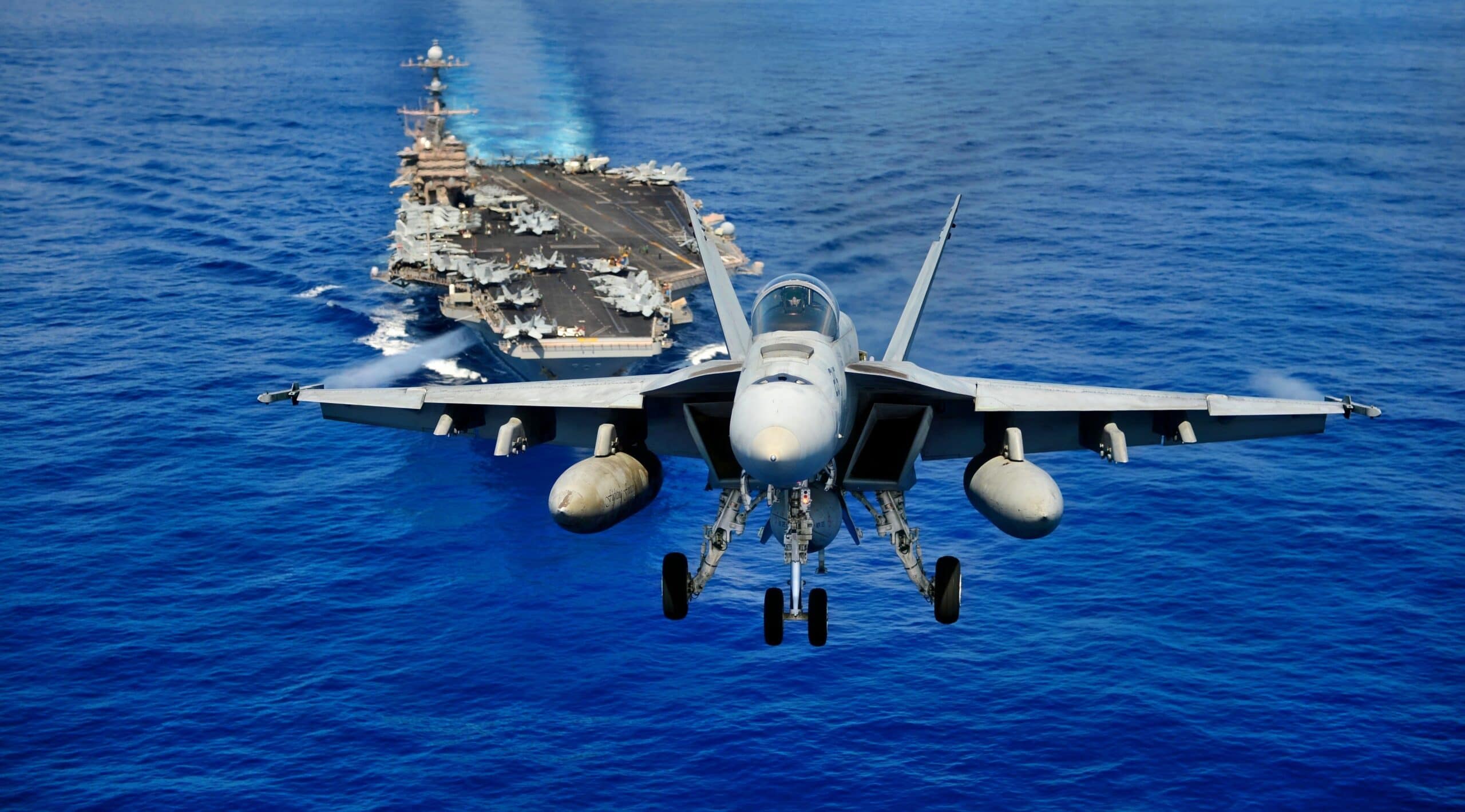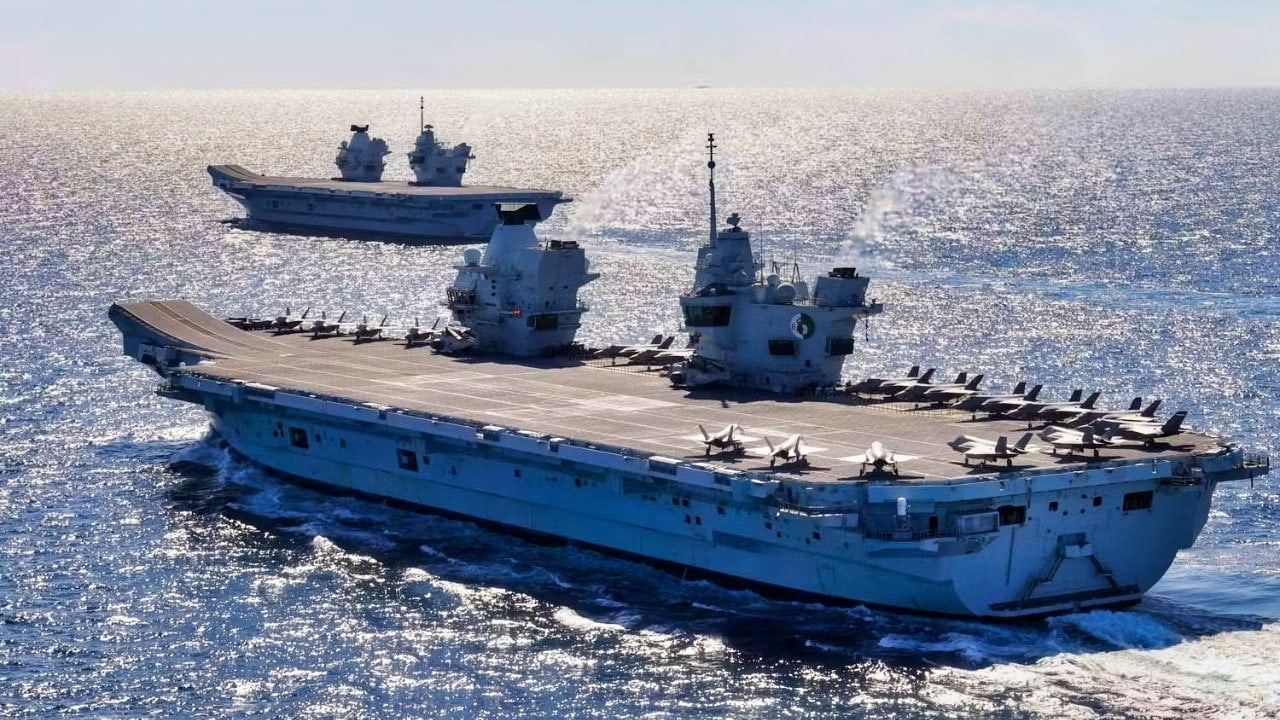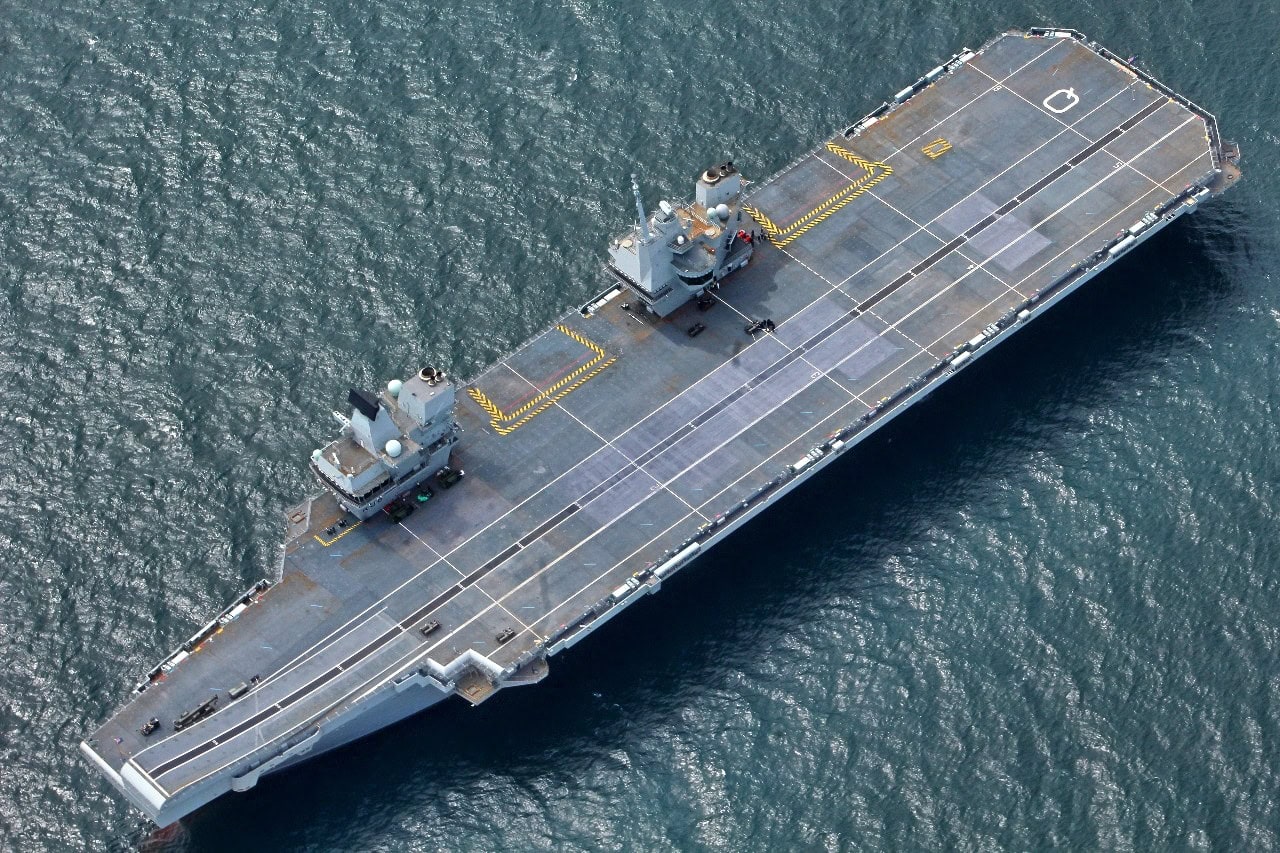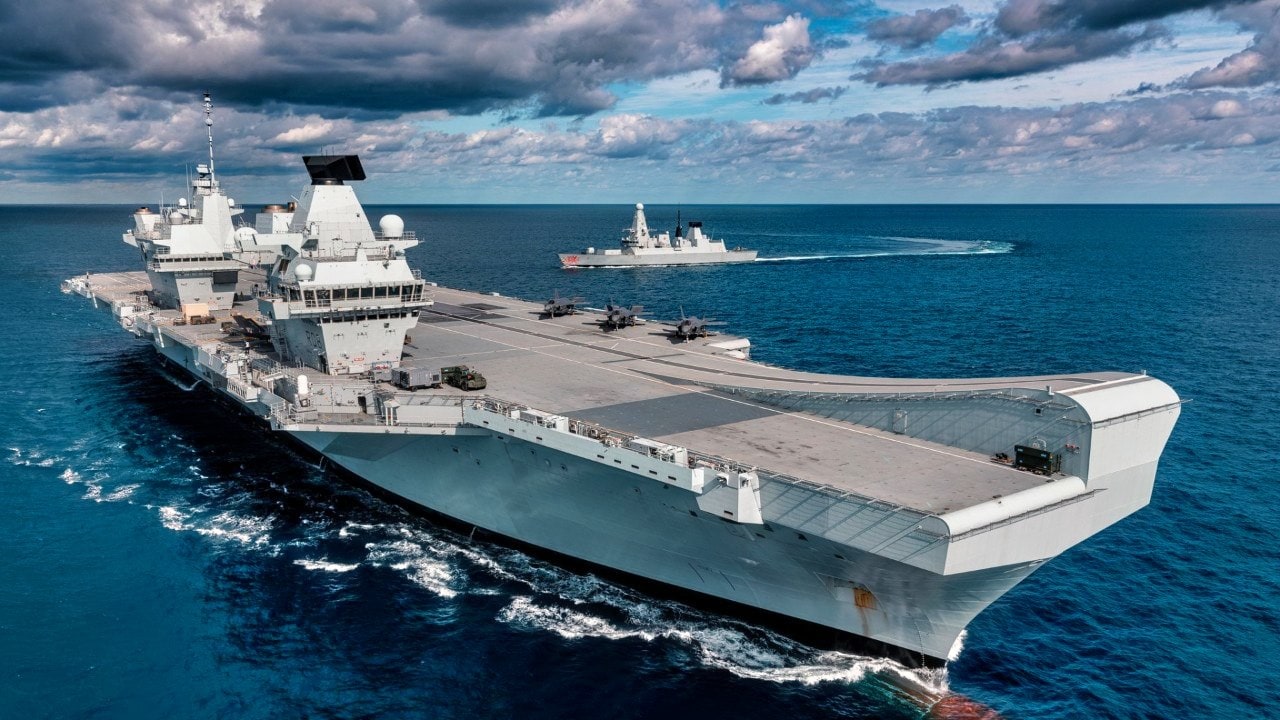Key Points: This analysis compares two leading modern aircraft carriers: the US Navy’s USS Gerald R. Ford and the UK’s HMS Queen Elizabeth. The Ford, a nuclear-powered supercarrier (100k tons), boasts higher speeds (30+ kts), electromagnetic catapults (EMALS), and carries aircraft like F/A-18s.
-The conventionally powered Queen Elizabeth (65k tons, ~25 kts) utilizes a ski-jump for its F-35B fighters and features a unique twin-island superstructure.

Aircraft Carrier. Image Credit: U.S. Navy.
-While the Ford is larger and costlier ($13.3B vs $3.2B), both deploy over 70 aircraft, possess advanced defenses/sensors, and overcame initial technical challenges, representing formidable power projection platforms for their respective navies.
Nuclear Power vs. Gas Turbines: Comparing US & UK Carrier Designs
Aircraft carriers are frequently in the news when they deploy to hotspots around the world. Both the United States and the United Kingdom depend on aircraft carriers to project power into regions where crisis situations and brushfire wars can spark at a moment’s notice. Americans have the new USS Gerald R. Ford supercarrier, and the British have showcased their HMS Queen Elizabeth. Both have endured ups and downs since launching, but they serve their countries gallantly. Let’s make a side-by-side comparison analysis of the Gerald R. Ford and the Queen Elizabeth so you can get a better idea of their pros and cons.
Examining Weapons Systems
The HMS Queen Elizabeth has the Phalanx Close-In Weapons System. This Gatling-style gun is the last defense against enemy bogeys and can fire 20mm shells at a rate of 3,000 a minute. Queen Elizabeth also deploys the Sea Viper and Sea Dart air defenders for longer-range protection.
The USS Gerald R. Ford’s advanced survivability measures include the Rolling Air Frame Missile, the Evolved Sea Sparrow missile, and the Phalanx.
Aircraft on Board
The Queen Elizabeth features the Merlin Mk2 helicopters for anti-submarine warfare and the F-35B for its main fighter component.
The Gerald R. Ford has Carrier Air Wing Eight, which boasts the F/A-18 E/F Super Hornet, the E-2D Advanced Hawkeye, EA-18G Growlers, and MH-60 Sierra and MH-60 Sea Hawk helicopters. Both carriers can deploy over 70 aircraft.

Queen Elizabeth-Class. Image Credit: Royal Navy.
Which Propulsion Systems Power the Ships?
The Queen Elizabeth is slower than the Ford and tops out at 25 knots, while the Ford can make 30 knots. This speed is made possible by the Ford’s two nuclear reactors, allowing the carrier to deploy worldwide. The Queen Elizabeth is conventionally powered but has powerful propellors driven by the Rolls Royce Marine Trent gas turbines. The Gerald R. Ford is propelled by two A1B nuclear reactors, offering 250 percent more electrical potential than the Nimitz-class.
The Queen Elizabeth has a fore island for navigation and an aft island for the flight control center. Its two elevators can deliver an F-35 to the deck in 60 seconds. The hangar can store up to 20 aircraft.
Length, Width, and Displacement
The Queen Elizabeth is a shade under 1,000 feet long at 918 feet in length. The Gerald R. Ford is one of the longest carriers in history at 1,100 feet long. The Ford is also wider at 256 feet, while the Queen Elizabeth is 229 feet wide. There is a lot of “super” in the Gerald R. Ford—it displaces a gargantuan 100,000 tons while the Queen Elizabeth only displaces 65,000 tons, but it is the biggest ship ever built by the Royal Navy. The Queen Elizabeth is three times bigger than the Invincible-class.
Thus, the Ford is more expensive at $13.3 billion, while the Queen Elizabeth cost considerably less at $3.2 billion.
What Are the Flight Decks Like?
The Queen Elizabeth also has a ski jump, which the Ford lacks. The American carrier is a true flat-top with a modernized electromagnetic catapult and advanced arresting gear for better launching and recovery of aircraft.
Both carriers have top-notch radar detection systems. They can track numerous targets at very long ranges. The Ford has the Dual Band Radar, which can sniff out even stealth airplanes, while the Queen Elizabeth has the Type 997 Artisan 3D radar for great detection and electronic warfare capabilities.
Aircraft carriers must offer their huge crews an excellent quality of life. Features aboard these carriers help make the sailors feel at home. The Gerald R. Ford has 4,500 personnel on board—more than the Queen Elizabeth at 1,600 sailors. The Ford features gyms, a library, and even a coffee shop. The Queen Elizabeth also has canteens, stores, and fitness centers.
The HMS Queen Elizabeth entered into sea trials in June 2017 and was commissioned later that year. Its first operational deployment was in 2021 and it led Carrier Strike Group 21 with patrols in numerous oceans and seas.

Pictured is an aerial view of HMS Queen Elizabeth as she conducts vital system tests off the coast of Scotland. Image Credit: Creative Commons.
The Ford was delivered in 2017 and entered service in the summer of that year. The first deployment was also in 2021. Thus, the two carriers mirror each other in their operational history. The Ford had its planned incremental availability in March 2022 and was able to attain its initial operational capability in December 2021.
Both carriers have endured problems. The Queen Elizabeth has suffered a broken propellor shaft and flooding. A fighter jet crashed in 2021, and the carrier needed ample maintenance in port. The Ford had issues with its dual-band radar. The electromagnetic aircraft launch system has been problematic, and the weapons elevators have caused trouble.
However, new ships of all kinds have to get the kinks out, and the Queen Elizabeth and the Gerald R. Ford are likely the best two carriers in the world (aside from the Nimitz-class). They will both be part of the fleet for decades. The carriers can answer the call for many different types of contingencies—from full-on combat to humanitarian missions. Both navies can be proud that the carriers have overcome design and engineering challenges. They are both keepers of the sea and dominant ships.
About the Author: Dr. Brent M. Eastwood
Brent M. Eastwood, PhD is the author of Don’t Turn Your Back On the World: a Conservative Foreign Policy and Humans, Machines, and Data: Future Trends in Warfare plus two other books. Brent was the founder and CEO of a tech firm that predicted world events using artificial intelligence. He served as a legislative fellow for U.S. Senator Tim Scott and advised the senator on defense and foreign policy issues. He has taught at American University, George Washington University, and George Mason University. Brent is a former U.S. Army Infantry officer. He can be followed on X @BMEastwood.

